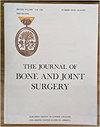Medico-legal aspects of peripheral nerve injury
1区 医学
Q1 Medicine
引用次数: 5
Abstract
Iatrogenic nerve injuries are always a matter for concern. This article will address the common causes, diagnosis and management of iatrogenic peripheral nerve injuries. The most widely used classification of peripheral nerve injury is that described by Seddon in 1943.1 He divided nerve injuries into three types: neurapraxia, axonotmesis and neurotmesis. Neurapraxia (inactivity of the nerve) is a non-degenerative lesion of a nerve characterised by a complete or partial failure to propagate an action, potentially resulting in motor and/or sensory loss. It is usually caused by compression or ischaemia, resulting in ischaemia of the myelin sheath. The nerve remains intact and Wallerian degeneration does not occur. It is reversible if the injurious agent is removed. If the distal segment of the nerve is stimulated, there is a motor response. The lesion recovers by remyelination of the distal segment and takes between two and 12 weeks, depending on the age of the patient and the site of the injury. In practice, it is unwise to assume that a lesion is a neurapraxia rather than a more severe injury because this will lead to delay in diagnosis and a poorer outcome. The presence of persistent pain suggests that the injurious agent is continuing to act. The diagnosis should not be made in the presence of a strong Tinel test which indicates that axons have been ruptured. An axonotmesis (cutting of the axon) is the result of disruption of the axon and its myelin sheath. The supporting structures, Schwann cells, endoneurium, perineurium and epineurium remain intact. It is usually the result of severe compression or a crush injury. Wallerian degeneration occurs distally, and proximally to the closest node of Ranvier. Repair is by a combination of collateral sprouting in lesser injuries and axonal regeneration in more severe injuries. The latter occurs at …周围神经损伤的医学-法律方面
医源性神经损伤一直是一个值得关注的问题。本文将讨论医源性周围神经损伤的常见原因、诊断和治疗。最广泛使用的周围神经损伤分类是Seddon(1943)所描述的。他将神经损伤分为三种类型:神经失用症、轴索神经症和神经症。神经失用症(神经不活动)是一种非退行性神经病变,其特征是完全或部分不能传递动作,可能导致运动和/或感觉丧失。它通常是由压迫或缺血引起的,导致髓鞘缺血。神经保持完整,不会发生沃勒氏变性。如果去除有害物质,它是可逆的。如果神经的远端段受到刺激,就会产生运动反应。病变通过远节段髓鞘再生恢复,需要2至12周,具体取决于患者的年龄和损伤部位。在实践中,假设病变是神经失用症而不是更严重的损伤是不明智的,因为这会导致诊断延误和预后较差。持续疼痛的存在表明伤害剂仍在继续起作用。诊断不应该在存在一个强的Tinel试验,这表明轴突已经破裂。轴突断裂(轴突切断)是轴突及其髓鞘断裂的结果。支撑结构、雪旺细胞、神经内膜、神经周围膜和神经外膜保持完整。它通常是严重压迫或挤压伤的结果。沃勒氏变性发生在远端和近端最近的朗维耶淋巴结。修复是通过轻微损伤的侧支发芽和更严重损伤的轴突再生的结合。后者发生在……
本文章由计算机程序翻译,如有差异,请以英文原文为准。
求助全文
约1分钟内获得全文
求助全文

 求助内容:
求助内容: 应助结果提醒方式:
应助结果提醒方式:


